This rammed earth house by DUSTÂ architects is nestled amongst the rocky outcrops and sprouting cacti of the Sonoran Desert in Arizona. Â I love it especially because it reminds me of Baja California Sur landscapes (except we are more desertic), and because Mariano is planning our rammed earth house in Baja as well (we’re still far away from building it, but we have the general idea already).
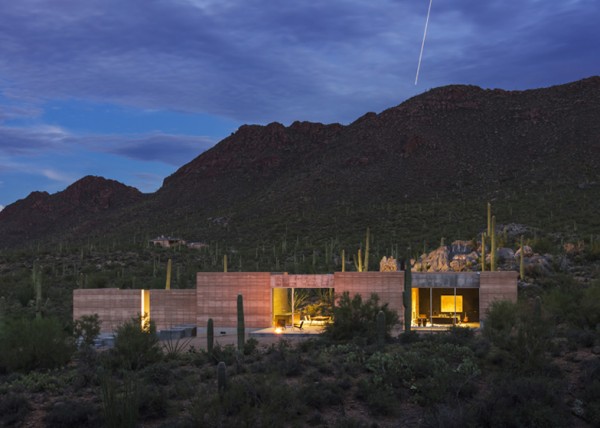
Tucson Mountain Retreat is carefully sited in response to the adjacent arroyos, rock out-croppings, ancient cacti, animal migration paths, air movement, sun exposure and views.

Great effort was invested to minimise the physical impact of the home in such a fragile environment, while at the same time attempting to create a place that would serve as a backdrop to life and strengthen the sacred connections to the awe-inspiring mystical landscape.

The home is primarily made of rammed earth, a material that uses widely available soil, provides desirable thermal mass and has virtually no adverse environmental side effects.

Historically vernacular to arid regions, it fits well within the Sonoran Desert, while at the same time it embodies inherent poetic qualities that engage the visual, tactile and auditory senses of all who experience it.

The program of the home is divided into three distinct and isolated zones; living, sleeping, and music recording/home entertainment. Each zone must be accessed by leaving the occupied zone, stepping outside, and entering a different space. This separation resolves the clients’ desired acoustic separation while at the same time, offers a unique opportunity to continuously experience the raw desert landscape.

Rooted in the desert, where water is always scarce, the design incorporates a generous 30,000 gallon rainwater harvesting system with an advanced filtration system that makes water available for all household uses.
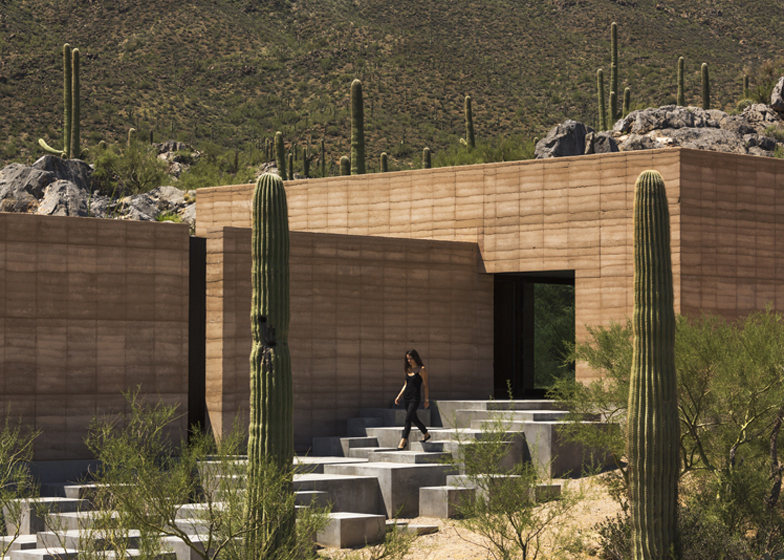
Solar heat gain is reduced by orienting the house in a linear fashion along an east–west axis, and by minimising door and window openings in the narrow east and west facades. The main living and the sleeping spaces extend into patios and open toward the south under deep overhangs that allow unadulterated views and access to the Sonoran Desert.
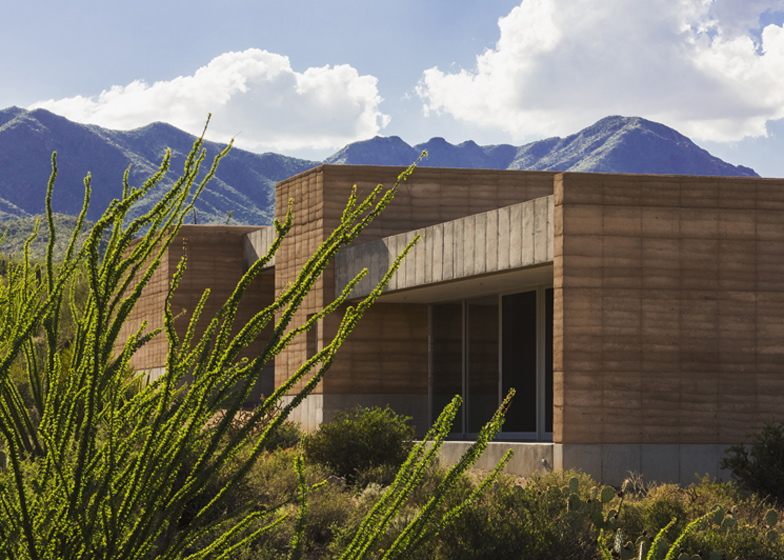
The overhangs provide shelter from the summer sun while allowing winter sunlight to enter and passively heat the floors and walls. They also scoop prevailing southerly breezes and enhance cross ventilation, which can be flexibly controlled by adjusting the floor-to-ceiling sliding glass doors. When the large glass doors are fully opened, the house is transformed, evoking a boundless ramada-like spirit where the desert and home become one.
Love this house, I look forward to seeing ours grow as beautiful as well.
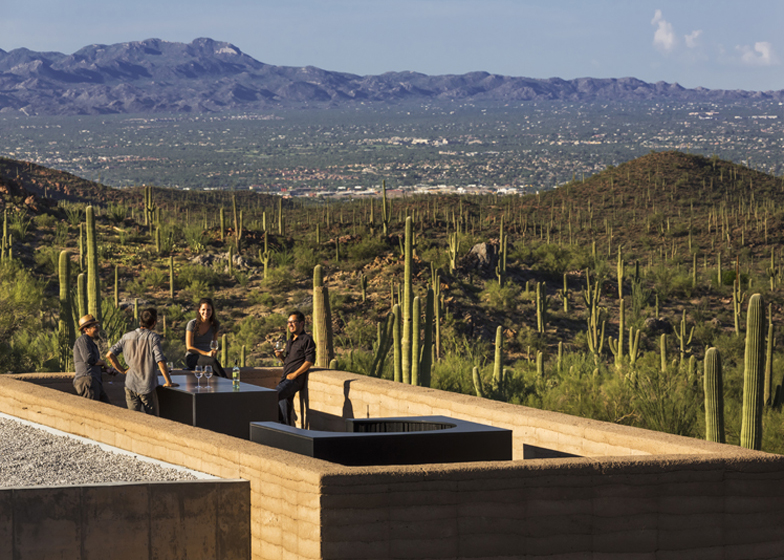
Photos by Jeff Goldberg / ESTO.




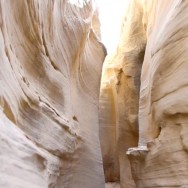





This is gorgeous! We are planning a rammed earth home in Yavapai County. Wondering though about bark scorpion issues in the rammed earth homes? I know they are an issue with many wooden homes. I am hoping that scorpions are not attracted to the rammed earth and would have less crevices to get into the house. I know that they can run in the front door when you open, or come through screens when they are opened……just wondering if you have had any issues with them in the house? Thank you!
Hi Syrena, I am sorry for my late reply. So great to hear you are planning a rammed earth home. As far as I know – and I am not an architect – from talking with a10 studio architecture, the pests don’t go into the rammed earth walls. Good luck with your new home!